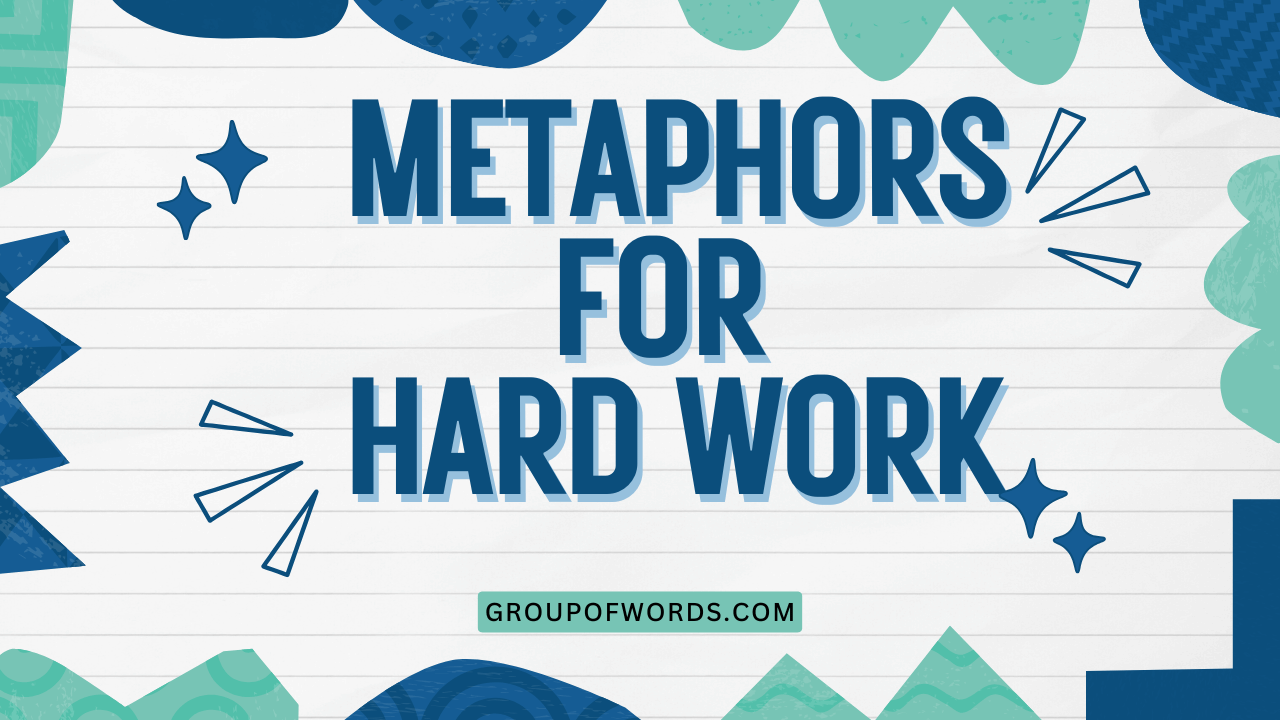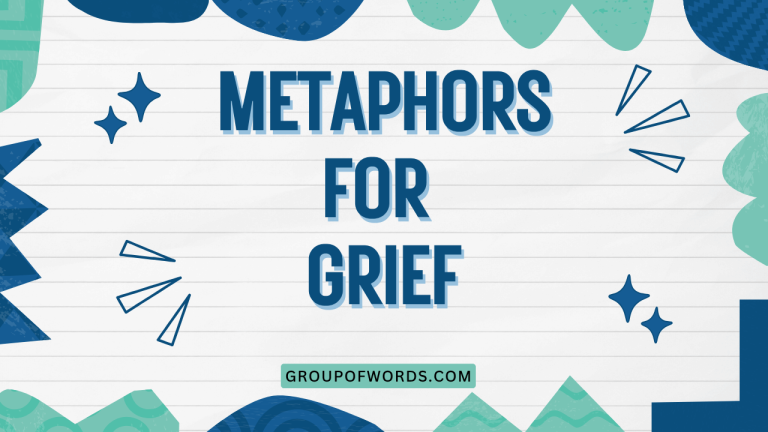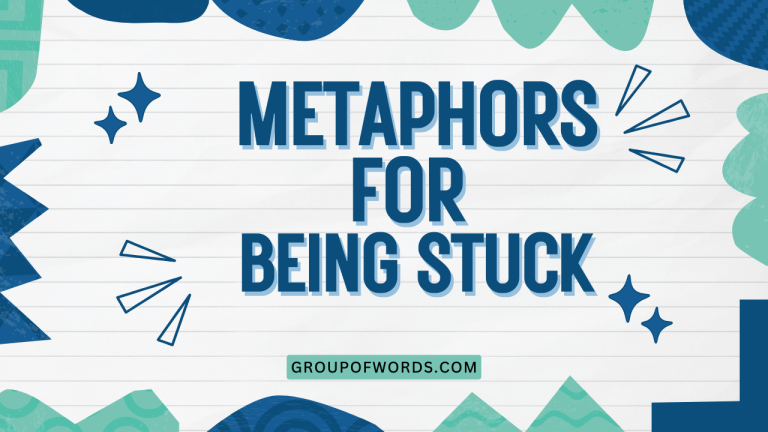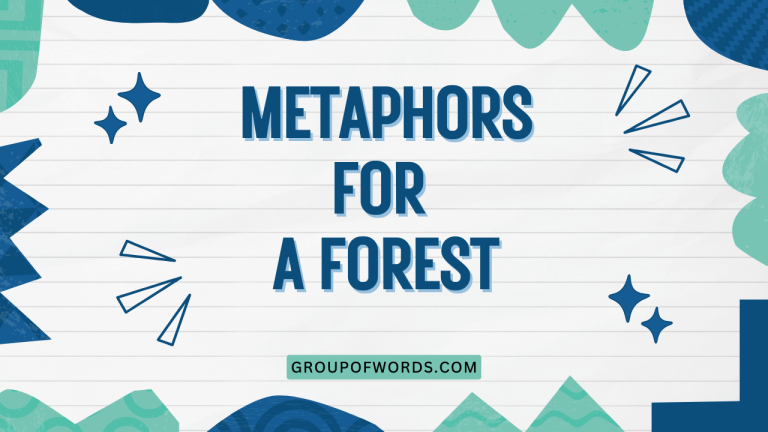Metaphors for Hard Work: A Comprehensive Guide
Understanding metaphors for hard work is crucial for mastering English idioms and figurative language. These metaphors not only enrich our vocabulary but also provide a deeper understanding of cultural perceptions of effort and dedication.
This article is designed to help English learners of all levels, from beginners seeking to expand their idiomatic vocabulary to advanced speakers aiming to refine their understanding of nuanced expressions. By the end of this guide, you’ll be able to recognize, interpret, and effectively use metaphors for hard work in various contexts.
This comprehensive guide will explore the definition of metaphors for hard work, their structural breakdown, different categories, numerous examples, usage rules, common mistakes, and practice exercises. Advanced topics and frequently asked questions will further enhance your understanding.
Let’s delve into the world of metaphors for hard work and unlock their potential to elevate your English language skills.
Table of Contents
- Introduction
- Definition of Metaphors for Hard Work
- Structural Breakdown
- Types and Categories of Metaphors for Hard Work
- Examples of Metaphors for Hard Work
- Usage Rules
- Common Mistakes
- Practice Exercises
- Advanced Topics
- FAQ
- Conclusion
Definition of Metaphors for Hard Work
A metaphor is a figure of speech that directly compares two unrelated things without using “like” or “as.” It asserts that one thing *is* another, implying a shared quality or characteristic. Metaphors are powerful tools for conveying complex ideas in a vivid and concise manner.
Metaphors for hard work are phrases or expressions that describe diligent effort and dedication by likening it to something else. These metaphors often draw on images of physical labor, intense mental activity, or unwavering commitment. They provide a more engaging and relatable way to communicate the concept of hard work than simply stating “working hard.”
The function of these metaphors is to evoke a sense of the intensity, difficulty, or perseverance involved in hard work. By using metaphors, speakers and writers can add depth and emotional resonance to their descriptions, making them more memorable and impactful.
The context in which these metaphors are used is varied. They can appear in everyday conversations, business presentations, literary works, and motivational speeches.
Understanding the context is crucial for interpreting the intended meaning of the metaphor accurately.
Structural Breakdown
Metaphors, in general, consist of two main components: the tenor and the vehicle. The tenor is the subject being described (in this case, hard work), and the vehicle is the thing it is being compared to.
For example, in the metaphor “He’s been plowing through his work,” the tenor is “his work,” and the vehicle is “plowing.” The comparison highlights the laborious and persistent nature of his effort, similar to the action of plowing a field.
The effectiveness of a metaphor depends on the clarity and relevance of the connection between the tenor and the vehicle. A well-chosen vehicle will resonate with the audience and effectively convey the intended meaning.
The structural pattern is typically: Subject + Verb (expressing the metaphor) + Object/Complement.
Understanding this structure helps in both interpreting and creating effective metaphors for hard work. By identifying the tenor and vehicle, you can decipher the underlying message and appreciate the intended impact.
Types and Categories of Metaphors for Hard Work
Metaphors for hard work can be categorized based on the aspect of effort they emphasize. Here are some common categories:
Physical Exertion
These metaphors compare hard work to strenuous physical activities. They often involve images of manual labor, heavy lifting, or intense physical effort.
These metaphors highlight the energy and effort expended in the work.
Mental Effort
These metaphors focus on the cognitive aspects of hard work, such as intense concentration, problem-solving, and critical thinking. They often use imagery related to mental strain, deep thought, or intellectual challenges.
Persistence
These metaphors emphasize the unwavering determination and perseverance required to overcome obstacles and achieve goals. They often invoke images of endurance, resilience, and relentless pursuit.
Dedication
These metaphors showcase the commitment and devotion to a task or goal. They often involve sacrifices, long hours, and a strong sense of purpose.
These highlight the emotional investment in the work.
Examples of Metaphors for Hard Work
Here are some examples of metaphors for hard work, categorized by the types discussed above:
Physical Exertion Examples
The following table provides examples of metaphors that describe hard work through comparisons to physical exertion. Each metaphor illustrates a different aspect of physical effort, such as lifting heavy objects, building structures, or engaging in strenuous activities.
| Metaphor | Explanation |
|---|---|
| He’s been carrying the team on his shoulders. | He’s shouldering most of the responsibility and effort. |
| She’s sweating blood to meet the deadline. | She’s working extremely hard and under immense pressure. |
| They’re building an empire from the ground up. | They’re creating something significant through hard work and dedication. |
| He’s tilling the soil to cultivate success. | He’s putting in the necessary effort to achieve long-term results. |
| She’s hammering away at the project. | She’s working persistently and forcefully on the project. |
| He is grinding day and night to finish the project. | He is working relentlessly and tirelessly. |
| She’s been wrestling with this problem for hours. | She’s been struggling intensely to solve the problem. |
| He’s climbing the ladder of success. | He’s working his way up through effort and achievement. |
| She’s laying the foundation for future growth. | She’s establishing the groundwork for future success. |
| He’s pushing himself to the limit. | He’s exerting maximum effort and energy. |
| She’s digging deep to find a solution. | She’s making a great effort to find a solution. |
| He’s shouldering the burden of the project. | He’s taking on the responsibility and workload. |
| She’s moving mountains to get it done. | She’s overcoming significant obstacles through hard work. |
| He’s pulling his weight on the team. | He’s contributing his fair share of effort. |
| She’s carrying the torch for the company. | She’s leading the way and setting an example of hard work. |
| He is plowing ahead despite the obstacles. | He is continuing to work hard despite challenges. |
| She’s breaking her back to finish the report. | She’s working extremely hard and exhaustively. |
| He’s toiling away in the lab. | He’s working diligently and persistently in the lab. |
| She’s lifting the company to new heights. | She’s contributing significantly to the company’s success. |
| He’s laying bricks to build his career. | He’s building his career step by step through hard work. |
| She’s tackling the problem head-on. | She’s addressing the problem directly and with determination. |
| He’s slogging through the mud of bureaucracy. | He’s struggling through difficult and tedious processes. |
| She’s hauling the business forward. | She’s pulling the business ahead through hard work and effort. |
Mental Effort Examples
The following table illustrates metaphors that represent hard work as intense mental effort. These metaphors often involve imagery of complex thinking, problem-solving, and deep concentration.
| Metaphor | Explanation |
|---|---|
| He’s burning the midnight oil to finish his thesis. | He’s working late into the night, studying or writing. |
| She’s racking her brains to find a solution. | She’s thinking very hard and intensely to solve a problem. |
| He’s wrestling with complex ideas. | He’s struggling to understand and process difficult concepts. |
| She’s decoding the market trends. | She’s analyzing and interpreting complex market data. |
| He’s diving deep into the research. | He’s immersing himself in thorough and detailed research. |
| She is untangling the web of regulations. | She is trying to understand and simplify complex rules. |
| He’s piecing together the puzzle of the data. | He’s carefully analyzing and integrating data to form a coherent picture. |
| She’s navigating the complexities of the project. | She’s managing and steering the project through its challenges. |
| He’s crunching numbers to finalize the budget. | He’s performing complex calculations and analysis. |
| She’s mapping out the strategy for the campaign. | She’s planning and outlining the detailed strategy. |
| He’s sharpening his mind with constant learning. | He’s improving his intellectual abilities through continuous study. |
| She’s incubating new ideas for the company. | She’s developing and nurturing new ideas. |
| He’s mining the data for valuable insights. | He’s extracting useful information from a large dataset. |
| She’s unlocking the secrets of the algorithm. | She’s understanding and mastering the complexities of the algorithm. |
| He’s unraveling the mystery of the code. | He’s solving a complex coding problem. |
| She is digging into the core of the problem. | She is thoroughly investigating the fundamental aspects of the issue. |
| He’s grappling with difficult concepts. | He’s struggling to understand and master challenging ideas. |
| She’s wading through piles of paperwork. | She’s dealing with a large volume of documents. |
| He’s chiseling away at the problem. | He’s gradually solving the problem through careful and persistent effort. |
| She’s sifting through the evidence. | She’s carefully examining and analyzing the evidence. |
| He’s plunging into the depths of research. | He’s immersing himself in detailed and thorough research. |
| She’s wringing out every last detail. | She’s extracting all possible information and insights. |
| He’s knitting together disparate ideas. | He’s combining different concepts to form a cohesive whole. |
Persistence Examples
The following table presents metaphors that illustrate hard work through the lens of persistence. These metaphors often involve images of endurance, resilience, and unwavering determination.
| Metaphor | Explanation |
|---|---|
| He’s staying the course despite the challenges. | He’s continuing to work hard despite difficulties. |
| She’s keeping her nose to the grindstone. | She’s working steadily and diligently without stopping. |
| He’s pushing through the obstacles. | He’s overcoming challenges with determination. |
| She’s plowing ahead with the project. | She’s continuing to work hard and make progress. |
| He’s fighting an uphill battle. | He’s facing significant challenges and difficulties. |
| She is holding the line against the competition. | She is maintaining her position despite competitive pressure. |
| He’s weathering the storm of the economic downturn. | He’s enduring difficult economic conditions. |
| She’s digging in her heels to defend her position. | She’s resisting pressure and steadfastly maintaining her stance. |
| He’s keeping the faith that things will improve. | He’s maintaining hope and belief in a positive outcome. |
| She’s pressing on regardless of the difficulties. | She’s continuing her efforts despite challenges. |
| He’s standing firm in his commitment. | He’s remaining resolute and unwavering. |
| She’s hanging in there during tough times. | She’s persevering and not giving up. |
| He’s sticking to his guns despite criticism. | He’s standing by his beliefs and actions despite opposition. |
| She’s riding out the turbulence in the market. | She’s enduring and managing through a period of instability. |
| He’s staying the course to achieve his goals. | He’s continuing his efforts to reach his objectives. |
| She is charging forward with unwavering resolve. | She is advancing with strong determination and purpose. |
| He’s battling through adversity. | He’s struggling and overcoming difficult situations. |
| She’s enduring the hardships to reach success. | She is tolerating difficult conditions to achieve her goals. |
| He’s persevering despite setbacks. | He is continuing his efforts despite failures and obstacles. |
| She’s tenacious in her pursuit of excellence. | She is determined and persistent in her quest for high quality. |
| He’s refusing to give up on his dreams. | He is determined to continue pursuing his aspirations. |
| She’s remaining steadfast in her commitment. | She is staying loyal and dedicated to her responsibilities. |
| He’s keeping at it until he succeeds. | He’s continuing to work diligently until he achieves his objectives. |
Dedication Examples
The following table provides metaphors that represent hard work through dedication, highlighting commitment, devotion, and sacrifice.
| Metaphor | Explanation |
|---|---|
| He’s pouring his heart and soul into the project. | He’s dedicating all his passion and energy to the project. |
| She’s giving her all to the company. | She’s dedicating her full effort and commitment to the company. |
| He’s living and breathing his work. | His work is his primary focus and passion. |
| She’s burning the candle at both ends. | She’s working extremely long hours and exhausting herself. |
| He’s all in on this venture. | He’s fully committed and invested in the venture. |
| She is devoting herself completely to the task. | She is giving her full attention and energy to the task. |
| He’s making sacrifices for the sake of his career. | He’s giving up personal comforts for professional advancement. |
| She’s putting her life on hold to achieve her goals. | She’s postponing personal plans to focus on her objectives. |
| He’s investing everything in his business. | He’s putting all his resources and effort into his business. |
| She’s committing wholeheartedly to the cause. | She’s dedicating herself fully and passionately to the cause. |
| He’s going the extra mile for his clients. | He’s exceeding expectations to provide excellent service. |
| She’s putting her heart into every detail. | She’s paying close attention and caring deeply about every aspect. |
| He’s giving 110% to the project. | He’s putting in maximum effort and dedication. |
| She’s making a difference through her hard work. | She’s having a positive impact through her dedication. |
| He’s leaving no stone unturned to find a solution. | He’s making every possible effort to find a solution. |
| She is immersed in her work. | She is deeply involved and focused on her work. |
| He’s dedicated to his craft. | He is committed and passionate about his work. |
| She’s driven by her passion for excellence. | She is motivated by her desire to achieve high standards. |
| He’s zealous in his pursuit of success. | He is enthusiastic and determined in his quest for achievement. |
| She’s resolute in her commitment to the project. | She is firm and unwavering in her dedication to the project. |
| He’s focused on achieving his objectives. | He is concentrating his efforts on reaching his goals. |
| She’s intent on making a positive impact. | She is determined to have a beneficial effect. |
| He’s passionate about his work. | He has strong enthusiasm and dedication for his job. |
Usage Rules
When using metaphors for hard work, consider the following rules:
- Clarity: Ensure the metaphor is easily understood by your audience. Avoid obscure or overly complex comparisons.
- Relevance: The vehicle should be relevant to the tenor. The comparison should make sense and effectively convey the intended meaning.
- Consistency: Maintain consistency in your metaphorical language. Avoid mixing metaphors that create confusing or contradictory images.
- Context: Consider the context in which you are using the metaphor. Ensure it is appropriate for the audience and situation.
- Originality: While common metaphors can be effective, strive for originality to make your language more engaging and memorable.
It’s also important to be aware of cultural differences. Some metaphors may not translate well or may have different connotations in other cultures.
Be mindful of your audience and adapt your language accordingly.
Common Mistakes
One common mistake is using mixed metaphors, which occur when you combine two or more incompatible metaphors in a single statement. For example:
- Incorrect: “He’s burning the midnight oil while keeping his nose to the grindstone.” (Mixing mental and physical exertion metaphors)
- Correct: “He’s burning the midnight oil to finish his thesis.” (Focusing on mental effort)
- Correct: “He’s keeping his nose to the grindstone to meet the deadline.” (Focusing on persistence)
Another mistake is using clichéd metaphors that have lost their impact through overuse. While these can be acceptable, try to find fresher, more original ways to express your ideas.
- Clichéd: “He’s working like a dog.”
- Better: “He’s been toiling tirelessly to meet the project goals.”
Finally, avoid using metaphors that are culturally insensitive or that could be offensive to your audience. Be mindful of the connotations of your language and choose your words carefully.
Practice Exercises
Test your understanding of metaphors for hard work with the following exercises:
Exercise 1: Identifying Metaphors
Identify the metaphors for hard work in the following sentences. Indicate the tenor and the vehicle for each metaphor.
| Question | Answer |
|---|---|
| 1. She’s been swimming upstream to get this project approved. | Metaphor: swimming upstream; Tenor: her effort to get the project approved; Vehicle: swimming upstream |
| 2. He’s been laying the groundwork for future success. | Metaphor: laying the groundwork; Tenor: his actions for future success; Vehicle: laying the groundwork |
| 3. They are building bridges to foster collaboration. | Metaphor: building bridges; Tenor: their efforts to foster collaboration; Vehicle: building bridges |
| 4. She’s been fighting tooth and nail to achieve her goals. | Metaphor: fighting tooth and nail; Tenor: her effort to achieve goals; Vehicle: fighting tooth and nail |
| 5. He is carrying the weight of the world on his shoulders. | Metaphor: carrying the weight of the world; Tenor: his responsibilities; Vehicle: carrying the weight of the world |
| 6. She’s been slogging through paperwork all day. | Metaphor: slogging through; Tenor: her work with paperwork; Vehicle: slogging through |
| 7. He’s been planting seeds for future growth. | Metaphor: planting seeds; Tenor: his actions for future growth; Vehicle: planting seeds |
| 8. She’s been scaling mountains to reach her goals. | Metaphor: scaling mountains; Tenor: her effort to reach goals; Vehicle: scaling mountains |
| 9. He’s been navigating treacherous waters to succeed. | Metaphor: navigating treacherous waters; Tenor: his effort to succeed; Vehicle: navigating treacherous waters |
| 10. She’s been weaving a tapestry of success. | Metaphor: weaving a tapestry; Tenor: her effort to achieve success; Vehicle: weaving a tapestry |
Exercise 2: Using Metaphors in Sentences
Complete the following sentences by adding an appropriate metaphor for hard work.
| Question | Answer |
|---|---|
| 1. To finish the project on time, he had to __________. | burn the midnight oil |
| 2. She __________ to overcome the challenges. | moved mountains |
| 3. The team __________ to launch the new product. | sweated blood |
| 4. He __________ to build his career. | laid the foundation |
| 5. She __________ to solve the complex problem. | racked her brains |
| 6. They __________ to meet the demanding deadline. | pushed themselves to the limit |
| 7. He __________ to get the company back on track. | carried the team on his shoulders |
| 8. She __________ to make sure everything was perfect. | left no stone unturned |
| 9. He __________ to achieve his lifelong dream. | poured his heart and soul |
| 10. She __________ to make a positive impact in the community. | gave her all |
Exercise 3: Explaining Metaphors
Explain the meaning of the following metaphors for hard work in your own words.
| Question | Answer |
|---|---|
| 1. “He’s been climbing the corporate ladder.” | He’s working his way up through the ranks of the company through hard work and dedication. |
| 2. “She’s been digging deep to find a solution.” | She’s making a great effort to find a solution. |
| 3. “He’s been fighting an uphill battle.” | He’s facing significant challenges and difficulties and is working hard to overcome them. |
| 4. “She’s been burning the candle at both ends.” | She’s working extremely long hours and exhausting herself in the process. |
| 5. “He’s been keeping his nose to the grindstone.” | He’s working steadily and diligently without stopping. |
| 6. “She’s been moving mountains to get it done.” | She’s overcoming significant obstacles through hard work. |
| 7. “He’s been staying the course despite the challenges.” | He’s continuing to work hard despite difficulties. |
| 8. “She’s been giving 110% to the project.” | She’s putting in maximum effort and dedication. |
| 9. “He’s been pushing through the obstacles.” | He’s overcoming challenges with determination. |
| 10. “She’s been pouring her heart and soul into the project.” | She’s dedicating all her passion and energy to the project. |
Advanced Topics
For advanced learners, exploring the cultural and historical context of metaphors can provide deeper insights. For example, many metaphors for hard work are rooted in agricultural or industrial practices, reflecting the historical importance of these sectors.
Also, analyze how authors and speakers use metaphors for hard work to create specific effects. Consider the impact of different metaphors on the tone, mood, and overall message of a text or speech.
Finally, practice creating your own original metaphors for hard work. This will require a strong understanding of figurative language and the ability to make creative connections between seemingly unrelated things. Think about current events, technological advancements, or social trends that could inspire new and relevant metaphors.
FAQ
- What is the difference between a metaphor and a simile?
A metaphor directly equates two things, saying one *is* the other (e.g., “He is a rock”). A simile compares two things using “like” or “as” (e.g., “He is as solid as a rock”).
- Why are metaphors for hard work important?
They add depth, emotion, and memorability to descriptions of effort and dedication. They also reflect cultural values and perceptions of hard work.
- How can I improve my understanding of metaphors?
Read widely, pay attention to figurative language, and practice identifying and interpreting metaphors in different contexts.
- Are some metaphors for hard work more effective than others?
Yes, the effectiveness of a metaphor depends on its clarity, relevance, originality, and appropriateness for the audience and situation.
- What should I avoid when using metaphors?
Avoid mixed metaphors, clichéd metaphors, culturally insensitive language, and comparisons that don’t make sense.
- How can I create original metaphors for hard work?
Look for unique connections between hard work and other things, consider current events and trends, and experiment with different images and ideas.
- Can metaphors for hard work be used in formal writing?
Yes, but use them judiciously and ensure they are appropriate for the tone and audience of your writing. Overuse can make your writing seem less professional.
- How do cultural differences affect the interpretation of metaphors?
Metaphors can have different connotations in different cultures, so be mindful of your audience and adapt your language accordingly to avoid misunderstandings or offense.
Conclusion
Mastering metaphors for hard work is an invaluable asset for English learners. By understanding the definition, structure, types, and usage rules of these metaphors, you can enhance your communication skills and express yourself with greater clarity and impact.
Remember to avoid common mistakes, practice regularly, and explore advanced topics to deepen your understanding.
By incorporating these metaphors into your vocabulary, you’ll be able to not only understand and interpret complex language but also add richness and color to your own speaking and writing. Keep practicing, and you’ll soon find yourself “moving mountains” with your English language skills!






